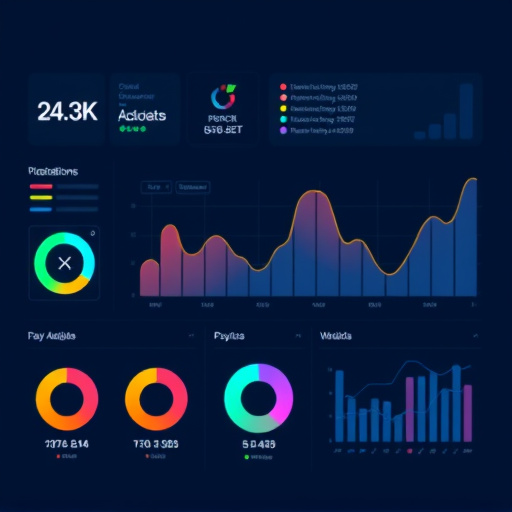Understanding user search intent is crucial for search engine optimization (SEO). By analyzing keywords, context, and behavior, professionals create content aligned with user expectations, boosting satisfaction and rankings. Metrics like click-through rates and session duration measure success, guiding website optimizations for better user experiences across diverse industries.
In today’s digital landscape, effective Search Engine Optimization (SEO) goes beyond mere keyword stuffing. It hinges on understanding user intent—what information or solution searchers truly seek. This article delves into three core aspects of intent-based SEO: deciphering user search intent, aligning content with their needs, and measuring success through tailored metrics. By focusing on these strategies, businesses can enhance visibility and deliver more relevant results to their audience.
- Understanding User Search Intent
- Aligning Content with User Needs
- Measuring Success: Intent-Based SEO Metrics
Understanding User Search Intent

Understanding user search intent is a cornerstone of effective search engine optimization (SEO). It involves deciphering what users truly want to achieve when they enter a query into a search engine. Keywords and phrases alone don’t reveal intent; instead, SEO professionals must analyze the context, tone, and user behavior behind each search term. By understanding whether a user seeks information, products for purchase, or services, content creators can tailor their strategies accordingly.
For instance, someone searching for “best website design Fort Worth” likely intends to find local web design agencies, whereas another user looking for “how to improve Google search rankings” is seeking guidance and tips. This level of intent recognition allows businesses to optimize not just their content but also their website structure and external linking strategies to match these expectations. Incorporating relevant keywords during keyword research services ensures that the site appears in the right searches, ultimately driving more qualified traffic and boosting online visibility.
Aligning Content with User Needs

In search engine optimization (SEO), aligning content with user needs is a fundamental strategy to enhance both user satisfaction and search rankings. By understanding user intent, businesses can create content that directly addresses the questions or tasks their target audience is seeking. This involves thorough keyword research services to identify the terms users are typing into search engines, which in turn guides the development of relevant, valuable, and unique content. For instance, an SEO company Broward County might tailor its blog posts or website copy to provide comprehensive answers to common queries related to digital marketing strategies.
This approach ensures that when users interact with a site through search engine results pages (SERPs), they find what they need instantly. Aligning content with user needs not only boosts engagement metrics but also signals to search engines the relevance of the site, leading to improved organic rankings over time. Additionally, it fosters trust and loyalty among visitors, encouraging them to return for future inquiries, thereby expanding the reach of the SEO services Dallas offered.
Measuring Success: Intent-Based SEO Metrics

Measuring success in Search Engine Optimization (SEO) has evolved beyond traditional metrics like page views or click-through rates. With a focus on user intent, marketers and web designers in Dallas, Arlington, and South Florida must shift their attention to key performance indicators (KPIs) that reflect user needs and behaviors. Intent-based SEO metrics aim to understand why users search for certain terms and what they expect to find when they land on a webpage.
One critical metric is the click-through rate from organic search results, which indicates how well your content aligns with user queries. Additionally, monitoring user engagement metrics such as average session duration, bounce rates, and pages per session provides valuable insights into the quality of your web design and content. By analyzing these intent-driven metrics, businesses can optimize their websites, ensuring they deliver relevant information efficiently and enhance user experiences across different locations and industries.
In today’s digital landscape, successful search engine optimization (SEO) transcends mere keyword density. By understanding and aligning content with user search intent, businesses can deliver targeted results that satisfy customer needs. This intent-based approach, coupled with relevant metrics, ensures that SEO strategies remain focused on what truly matters: providing value to users. Adopting these practices not only enhances user experience but also drives organic growth in a competitive online environment.














